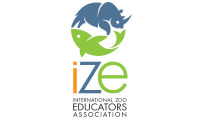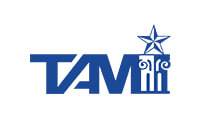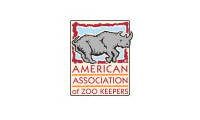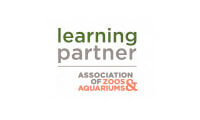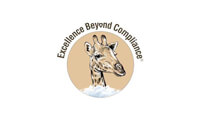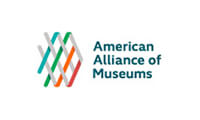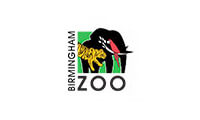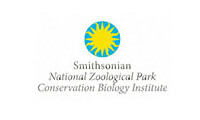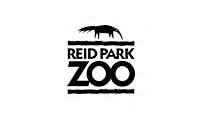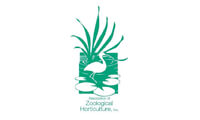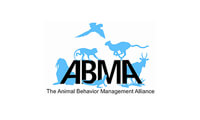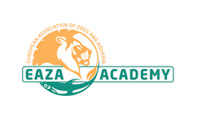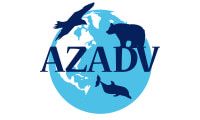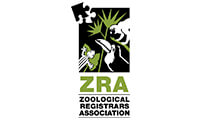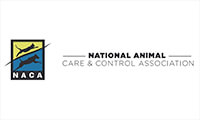Getting Better All the Time
Help in Navigating the New Animal Welfare Act Bird Regulations—
and Using Them to Make Things Better for Birds and Other Animals
By James F. Gesualdi
To keep ahead, each one of us, no matter what our task, must search for new and better methods—for even that which we now do well must be done better tomorrow.
—James F. Bell
Don’t believe what your eyes are telling you. All they show is limitations. Look with your understanding. Find out what you already know and you will see the way to fly.
—Richard Bach
Welcome to the "Club," Birds
Amazingly, the long-anticipated final regulation of birds not bred for use in research covered under the Animal Welfare Act (AWA) was delivered via the Federal Register rather than by stork, perhaps so as to avoid any actions appearing to be at odds with the new U.S. Department of Agriculture (USDA) requirements. The February 21, 2023 Federal Register notice at 88 Fed. Reg. 10654 can be found here. For ease of reading and review, the unpublished, single-column, double-spaced version is available as well, here. The published form may be easier to search and find the actual regulations, but the unpublished form is more convenient for reading. (Remember to cite to the official publication if you are referencing the regulations.) Technical corrections to the bird regulations can be viewed here.
This is a watershed moment for birds, the AWA, the zoological community, the stakeholders behind the push for the regulations, and the thousands of entities and individuals now under the jurisdiction of the AWA, and having to become licensed or registered because of their bird-related activities.
The zoological community has useful experience and expertise. The zoological community, especially accredited/certified organizations, and Excellence Beyond Compliance® practitioners may find the implementation of the new regulations more manageable. Using the AWA as a starting point and treating all animals as covered and part of your animal well-being program—having put into action professionally accepted standards and other good practices, as well as familiarity with administration of similar existing AWA regulations for other species—provides a solid foundation for effective implementation of the bird regulations. Use this experience to make the most of the time until the day the new regulations are enforced, with respect to regulated entities already licensed under the AWA: August 21, 2023 (newly covered entities have until February 21, 2024).
Getting a Good Handle on the Bird Regulations
A good place to start, particularly for those less experienced, is attorney Rebecca Bazan’s posting of a succinct synopsis of the bird regulations, including who is covered and what is required. This provides a quick overview to make better sense of the actual regulations.
The bird regulations (cited above) should be placed with your copy of the complete AWA regulations. If you have a binder of all the AWA regulations, or a hard copy of the agency’s "blue book" of the regulations, print the bird regulations and keep a copy in the binder or blue book, so it is available when needed. Likewise, if you maintain an electronic version of the AWA regulations or the blue book, keep the bird regulations easily accessible electronically.
Review the regulations to better understand relevant details and to start thinking more deeply about them.
To gain greater insight, read the preamble to the regulations. The lengthy discussion that precedes the actual regulations in the Federal Register notice, known as the preamble, explains the regulations, often in response to specific comments or questions. The preamble also defines terms and concepts not defined in the AWA, existing regulations or the new bird regulations. It also identifies changes from the proposed rule (available here), which may still have useful information on particular points, as that details agency thinking at the proposed stage.
Make use of agency guidance on the regulations, (which is a work in progress). The agency website has a page dedicated to the new regulations, and it continues to add new resources (available here). Watch the videos on the website, especially "Preparing for a Prelicense Inspection" by Dr. Cody Yager, the agency’s Avian Field Specialist (with its Center for Animal Welfare). This video goes into detail on all the bird regulations (available here). Watch it! As indicated in the Federal Register, the agency will be issuing more guidance, and conducting webinars and other outreach to aid in implementation of the regulations.
Contact the USDA. The notice welcomes emails to animalcare@usda.gov. This will help you and many others, as the agency has reserved a spot on the webpage for Frequently Asked Questions.
Upcoming New York State Bar Association Committee on Animals and the Law webinar: “When Doves Cry: A Survey of the Avian Legal Landscape” will feature a team of U.S. Department of Agriculture (USDA) leaders discussing the bird regulations, as well as other leading attorneys presenting on a variety of avian subjects. The program and registration link is available here. Use the code NAMP91 to register at a reduced fee as a non-attorney.
Practical Suggestions for Zoological Organizations and Professionals
These were originally provided in the January 2023 column to give you a head start, and remain even more relevant upon reviewing the bird regulations (available here). Study the requirements, and assess your state of compliance through self-inspection and a needs assessment.
- Ask your inspector to review your birds and associated facilities, programs, staff, and training before the regulation is effective. This can be done informally when they are already on site for an inspection.
- Consider asking similar nearby facilities to send representatives with relevant expertise to "inspect" your birds and all related operations. Alternately, ask if they could conduct a virtual inspection. Either way, you'll want to get additional, authoritative feedback and suggestions, in advance of the effective date of the new regulation.
- Identify needed and desired changes and improvements. Prioritize them, and allocate or plan to allocate funding and resources, with concrete time frames for completion. If the time frame extends until after the effective date of the regulation, consider discussing a finite extension of time to commit to the completion of the improvements.
- Freshen up and expand your database/library of credible resources—including animal care and husbandry manuals and research—on each bird species in your care. Make sure all staff are well acquainted with these resources. These may be critical in educating/informing inspectors about species-specific science-based information underpinning your policies and practices.
- Start training staff, with help from accrediting/certifying and professional associations and others, including avian experts.
- Have animal care and veterinary staff review behavioral and medical conditions/status of birds, especially those with special needs or unique conditions, so as to be familiar with their life history and individual records if/when an inspector reviews or questions that bird's condition or situation. Experience has demonstrated that such information, when forgotten or not presented during inspection, may require an inspection report appeal to address substantial differences; but it is cost-effective and time-effective to resolve such matters at the earliest possible stage—and that means greater resources for the animals themselves.
Looking Forward: Insights from the Bird Regulations, and How They Can Help Other Animals
Performance-based standards in the regulations are essential, given the diversity and variety of birds and bird species. It makes for workable regulations that are generally preferred by regulated entities, but sometimes off-putting to critics. When a bad outcome ensues and AWA liability may attach, perspectives on performance-based standards change. The bottom line is, these standards provide for flexible ways to comply and that allow for creativity and innovation to find new and better pathways to bird welfare.
Professional standards and professional practices. These are generally incorporated by reference in the new bird regulations, without referring to any particular standard or practice. Similar references to professionally accepted or recognized standards also are found within the existing AWA regulations. The agency offered the following description of professionally accepted standards in the preamble:
We do state that such determinations will be made in accordance with "professionally accepted" standards, which may vary based on the species in question. In some instances, they could be articulated in published literature and industry guidelines that would provide a "safe harbor" for the entities; in others, they may simply be based on widely accepted best practices applied in conjunction with the expertise of the facility’s employees.
The purpose of our including "professionally accepted standards" in the rule is to provide facilities with the flexibility to use the knowledge they have of their particular birds and the ability to apply professional standards in order to meet our proposed standards. The means by which the standards may be met are too numerous and species-specific to include as prescriptive standards, and any attempt to do so or by incorporation by reference would eliminate the flexibility that newly licensed entities will need to ensure that their facilities are compliant.
88 Fed. Reg. at 10684.
This also adds flexibility, though some are concerned that such deference to regulated communities weakens oversight of animal welfare. There is a lot to think about here. First, incorporation by reference of professionally accepted standards and/or practices may make those enforceable by the agency under the AWA, especially if reliance upon them is explicit. This also means that the AWA requirements might change with the evolution of professional standards. Opportunity is knocking here for those accrediting/certifying bodies to further expand protections under the AWA, by continuously improving and raising their standards to afford birds, and other animals, greater protection under the AWA, without having to resort to new rulemaking. Now, that is what leadership looks like: Find ways to make animals lives better, and do it—and let the AWA and others catch up while still striving to get better and better.
The central role of the attending veterinarian and veterinary authority was reiterated, reinforced, expanded (and perhaps reasonably modified from a few items in the proposed rule), and requires further study. The attending veterinarian remains ultimately responsible for veterinary decisions. Some matters, particularly those not solely veterinary calls, may properly be addressed by veterinary consultation and/or collaboration. The regulations and preamble address that. In some cases, a subject may not require veterinary "approval" unless the vet sees things differently. This is a regulatory standard and situation-specific analysis. Telemedicine may be acceptable for some routine bird exams, but situations where a bird may require treatment necessitate a vet’s presence that might be satisfied by a local consulting vet being on site and hands-on in collaboration with an off-site expert attending vet. Again, there is more to examine and reflect upon here.
Environment enhancement to promote the psychological well-being of birds. Somewhat similar in approach to the standards for nonhuman primates, this is also much more advanced than the required enrichment for other species, which in the AWA regulations only consists of exercise for dogs and some enrichment for marine mammals. As suggested by the recent Advanced Notice of Proposed Rulemaking on various subjects including environmental enrichment, this is one more future advance that should be extended to all animals, especially those covered under the AWA.
Risk Based Inspection System. The dramatic increase in regulated entities anticipated because of the new bird regulations puts greater attention and stress on the agency’s Risk Based Inspection System (RBIS). RBIS allows limited agency resources to be directed to areas and entities of greater concern, based on a variety of factors including AWA compliance history. "Good" facilities may therefore be inspected even less frequently. Focusing on problem facilities makes sense, and should help the animals most in need. Yet, fewer and/or less frequent inspections for other facilities is nothing to rejoice about. Generally, the more often you are inspected, the better prepared and more vigilant your team will be, and the better protected the animals and the organization are. Going forward, potentially fewer inspections will render accreditation, certification, and Excellence Beyond Compliance even more important and helpful.
Better standards for birds should be harmonized with new, better standards for other species under the AWA. Advances, clarifications, and other improvements included in the new bird regulations should serve as a road map for promptly harmonizing and enacting similar species-specific changes across the full range of animals covered under the AWA—for example, making sure the enclosures and structures for social birds contain sufficient and appropriate spaces for birds low in the hierarchy. It could be an expedited harmonization rulemaking to update other standards. This may be an opportunity for different stakeholders to consider collaborating on a petition for such a rulemaking, with specific items to harmonize and upgrade. It could be a wonderful, consensus-building project.
All of the above highlighted themes from reviewing the new bird regulations provide greater opportunities to make the lives of birds and other animals (unaware of the AWA) better because of the AWA!
Additional AWA Notes
On February 15, 2023, USDA Animal and Plant Health Inspection Service (APHIS) provided its fiscal year 2022 enforcement activity summary data, including matters relating to the AWA. The agency notes that "[i]t is important to recognize that these enforcement actions are just one tool APHIS uses to promote compliance" (available here).
"APHIS has a number of available options to resolve a case in which the evidence substantiates that an alleged violation has occurred. These options include issuing regulatory correspondence (such as an official warning) to the individuals or businesses involved in the alleged violation; offering to resolve the case through a stipulated penalty; and referring the case to the USDA Office of the General Counsel for formal administrative action before the USDA Office of Administrative Law Judges or referral to the U.S. Department of Justice."
In 2022, 262 cases involving alleged AWA violations were brought, and the outcomes are summarized on the website. Notably, one litigated case that settled for $25,650 involved allegations relating to "failure to protect and prevent discomfort to animals kept outdoors by providing natural shelter appropriate to the local climatic conditions." The agency posts enforcement information on specific cases online, including "…initial decision and orders, default decisions, consent decisions, and administrative complaints…" (available here).
USDA published its semiannual regulatory agenda in the Federal Register on February 22, 2023 (88 Fed. Reg. 11194), available here. With respect to APHIS Animal Care, it referenced the new bird regulations, and notice of proposed dog regulations—on microchipping, live imports, and cage standards for domestic dogs. That seemed to be it, in terms of major AWA developments and initiatives.
In a March 7, 2023 stakeholder announcement (available here) and Federal Register notice (available here), USDA APHIS Animal Care announced that it has extended the time to submit comments on the Advance Notice of Proposed Rulemaking on “Wild and Exotic Animal Handling, Training of Personnel Involved With Public Handling of Wild and Exotic Animals, and Environmental Enrichment for Species” until April 10, 2023. This is an important opportunity, so please consider sharing your thoughtful expertise with the agency.
The Important Work Ahead
The new AWA bird regulations are here, and there is much work to do. The agency, regulated entities (existing and new), and other stakeholders pursuing additional changes to extend and/or refine these standards will all be fully engaged for the foreseeable future. To the extent that goes toward enabling birds to be whatever beautiful, unique sort of bird they were created to be, that is good. Thinking further about the bird regulations illuminates more worthwhile ideas to improve the AWA regulations governing other species, to advance their interests, protection, and well-being. That is even more hard work, and it too will take time. Time will keep moving on. Time invested on behalf of meaningful, positive change for birds and other animals is time well spent.
May my heart always be open to little birds, who are the secrets of living.
— e.e. cummings
If you want to see birds, you must have birds in your heart.
— John Burroughs
Note to those aspiring or called to helping animals through law and policy: Read the Federal Register notices for the birds, and for all the lessons about regulatory process, analysis, drafting, commenting, and implementation. All those things matter greatly—even more so when your understanding continues to expand, and you can make good use of these tools to create a life in animal law or a related field, and make a difference for animals and people.
In loving memory of Kevin Donnelly, another lover of life (and a devoted New York Jets fan), whose time was too short. His laugh, strength, service to country, and love of family are already missed, even as his voice resonates in my mind. Love you, KD.
© 2023 James F. Gesualdi, P.C. The opinions expressed herein are solely those of the author. This is not, nor should it be construed as, legal advice.


